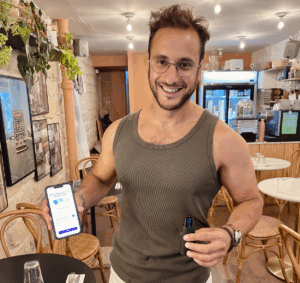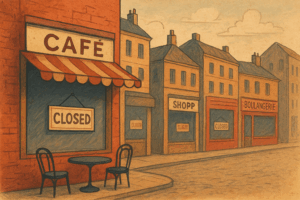Working on the visibility of a small or very small business (VSE) on the Internet does not only consist of putting your website online and promoting it. There is this little extra, this choice of a well-formulated strategy which can improve the communication of a small business.
Digital marketing should, in my opinion, be in congruence with, on the one hand, the type of business on which you are working, and on the other hand with the targeted market segment.
These two characteristics have a direct influence on the way you promote your business online. In order to simplify things, and know what types of means to implement for which types of VSEs, we can schematically identify two types of companies: those whose offer is differentiated, distinguished, and which cultivates a strong brand image (example: specialized caterer, oriental beautician, new brand of men's underwear, interior designer, etc.), and those whose offer is little differentiated, and which targets the greatest number of prospects according to the geographical location of their points of sale or their delivery area (UV in Paris, shoemaker in Vincennes, printing and delivery of business cards at home, work at home, etc.) .
So, depending on whether your small business is more in the first category or more in the second, your web communication will use slightly different means. Let's see which ones.
Note: This chapter is the 10th in a series of course on Management 2.0, the summary of which can be found here.
VSEs whose offer is differentiated
For this type of marked-down offer, the company generally cultivates a certain image that it transmits to its customers. For example, a small gourmet restaurant that sells its unique know-how transmits certain values to its customers, who love the brand as much for the good dishes as for the differentiated concept, the values conveyed, the feeling of belonging to a community. The idea is therefore to adapt your web strategy according to this differentiated concept.
In this case, it is not a priority – even if potentially useful – to be indexed in all possible directories imaginable, to buy very competitive keywords on Google AdWords and to seek to target the masses.
The strategy could instead be broken down as follows:
- Have a website and social media accounts on which the brand image, know-how, concept and atmosphere of the business are well highlighted: through beautiful photos, well-chosen texts, and press or blog feedback if any.
- Work on your natural and local referencing, without devoting all of your time to it, and sharing your time with communication via press relations, blogs, influencers.
- If possible, develop a certain expertise on the internet in the field in which the VSE works: blogging, tweeting or making videos on Instagram, Tiktok and Youtube for the case of a specialized beautician for example, giving culinary advice via partnerships with gastronomic sites for a restaurant, etc…
- Work on your Facebook, Instagram and Tiktok page to enable strong and viral engagement from your customers: the stronger the brand image, the more your fans will be good ambassadors for your brand. A brand image can be strong if, for example, there is technological sophistication from above for a start-up, unique values such as selling local products for a restaurant or defending a certain idea of clothing style for a t-shirt seller. In this type of case, social networks are a very important strategic tool because they are a viral driver of the marketing values defended by the company.
- Post atypical and attractive listings online in directories (Google Maps, Thefork, Tripadvisor, etc.). On a Google Maps page for example, the idea is to promote your know-how, through good reviews, beautiful photos, relevant videos, the name of the brand highlighted and a cleverly written presentation text that will interrupt the potential target.
- Monitor customer reviews and user reviews.
- If a budget is planned, launch targeted and unique advertising campaigns on sites related to the company's activity. Contact these sites directly, or go through advertising agencies specializing in sponsored articles and targeted advertising on certain niche sites.
VSEs whose offer is not very differentiated
For this type of small business, it will be more productive to focus on an aggressive strategy to conquer Internet users. We must be visible on the web, and this relatively to the greatest number of people depending on our capacity to satisfy demand, on a quantitative and geographical level.
To do this :
- We should favor a clear, efficient and no-fuss site: the information must be communicated as quickly as possible, and understandable by as many people as possible.
- It would be relevant to register on many directories in order to benefit from as wide a field of visibility as possible.
- We should optimize our Google Maps listings based on strategic keywords: where a VSE with a differentiated offer must highlight its name, a VSE with a poorly differentiated offer must highlight its service to improve its local SEO. Example: “Mercier & Fils, Shoemaker in Paris 15” rather than “Mercier & fils, the shoemaking pros to serve you”.
- If the budget is there, test advertising campaigns on the Google AdWords network, to target the greatest number of people where you want to be displayed.
More generally, the idea here is toimprove your visibility on the keywords that make up your business, to optimize your local SEO, while in the first case, the idea was to cultivate your brand image by highlighting highly differentiating content.
Sometimes a small business needs to have both sides, because as I indicated at the beginning, things are not necessarily set in stone. Example of a Thai restaurant for example which would have every interest in combining the first strategy in terms of brand image, and the second to be quickly found via aggressive and relevant local referencing.
Finally, setting up a multilingual site and content in several languages on social networks can prove particularly relevant, particularly for companies whose target market can be deployed internationally via delivery, or quite simply in a local market but which can reach passing tourists.
That said, be careful of the costs and the congruence of your strategy, because chasing too many hares at once can sometimes prove to consume a lot of energy, with little results.
Chapter 11: Start-up, how to avoid the Cargo Cult in business strategy »
« Chapter 9: 10 tips for minimizing agency effects in digital outsourcing





